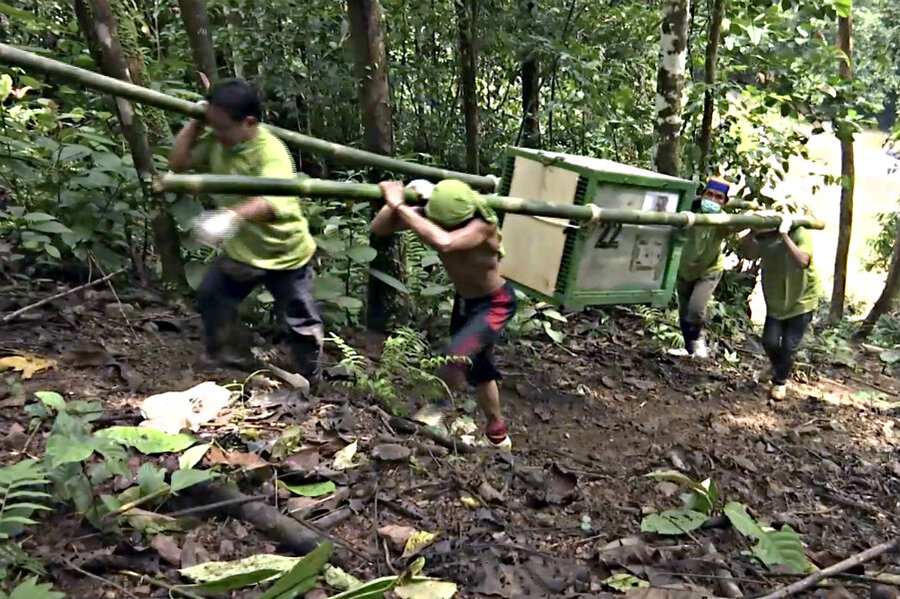Captured orangutans return to wild in Borneo
Loading...
The Borneo Orangutan Survival Foundation, a conservation nonprofit in southeast Asia, released five more orangutans into the wild last week as part of a massive effort to rehabilitate the giant apes.
Since 2012, the BOSF has rehabilitated and released 234 orangutans into its 212,000-acre sanctuary, making the foundation a key part of the effort to save the endangered species – and to keep them in the wild, not just in zoos or private collections.
"Because we love them, we have to let them go, to be free in their habitat," said BOSF chief executive Jamartin Sihite, according to the Associated Press. "They have a right to live in their natural state and not with people as pets."
Among the five animals released last Wednesday were a hairy redhead named Jamur and her daughter J-lo. Jamur spent more than two decades in captivity before she and her 10-year-old daughter were released last week.
Although Borneo orangutans are more plentiful than Sumatran orangutans, whose entire population numbers only a few thousand, their populations have declined by two-thirds since the 1970s.
The foundation exists to counter that decline, rescuing injured or sick orangutans and slowly retraining them to live in the wild, sending them first to "forest school," then to a halfway house where they become less dependent on humans, and finally into the sanctuary the group acquired in 2011.
In part, orangutans are endangered because of creeping deforestation and agricultural sprawl that threatens their ancestral habitats. The refuge managed by the BOSF keeps the orangutan population away from human threats.
"Nowadays there is only a few of that kind of area left – far away and really difficult to reach," said Dr. Sihite. Borneo is the third largest island in the world, with an ancient rainforest that dates back 130 million years, making it the world’s oldest rainforest.
Government officials are getting on board with the foundation’s mission, with a handful present at the release last week. About 90 percent of orangutan releases are successful. Last week’s release, which was the foundation’s ninth, occurred on the 25th anniversary of the group’s founding.
Conservationists say that saving the orangutans has collateral benefits for the health of the forest system as a whole.
With thousands of acres conserved as orangutan habitat, as The Christian Science Monitor reported in 2011, other species such as clouded leopards and Sumatran rhinos reap the benefits.
Rampant deforestation, also a culprit in carbon dioxide proliferation, has decimated the homes of Sumatran orangutans, the critically endangered cousin of Borneo orangutans. Dr. Serge Wich, an orangutan researcher from Liverpool John Moores University, said deforestation has compressed orangutan populations, as the Monitor’s Story Hinckley reported in March:
"They start using the parts of their home range that has not been deforested, so there will be an increase in density," explains Wich. Deforestation typically occurs on the lowlands, but that doesn’t mean these highland individuals are safe. Regardless of where their nests are located, all Sumatran orangutans have come down to the deforested lowlands for food. [...]
"If we project orangutan losses due to deforestation [with the new population numbers] there is not difference there," Wich tells the Monitor. "They were always probably more widespread than we thought. And some of those areas that we hadn’t gone to, they probably had orangutans that are now gone."
In Borneo, BOSF officials say they’re trying to keep their orangutans as far from humans as possible.
"We looked for a place to release them that is very far away from people," said Sihite. "We hope that very few people will come to this area in the next 10 or 15 years."






